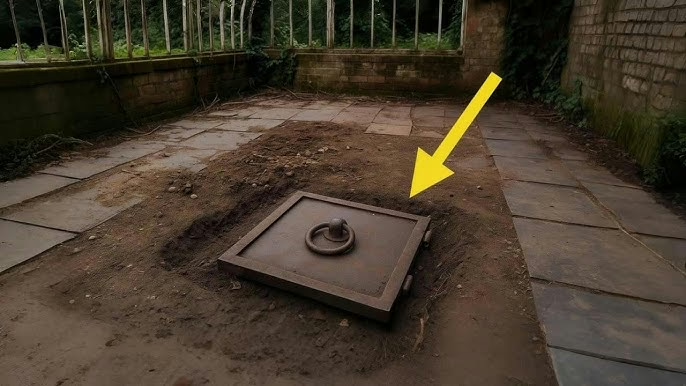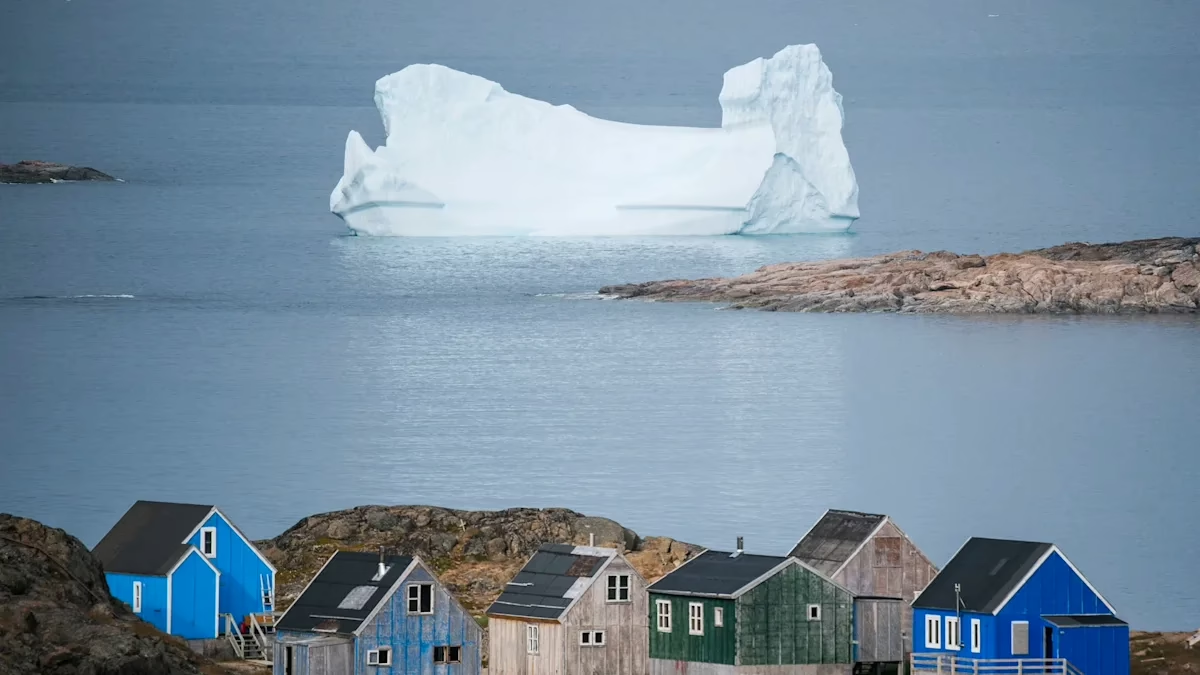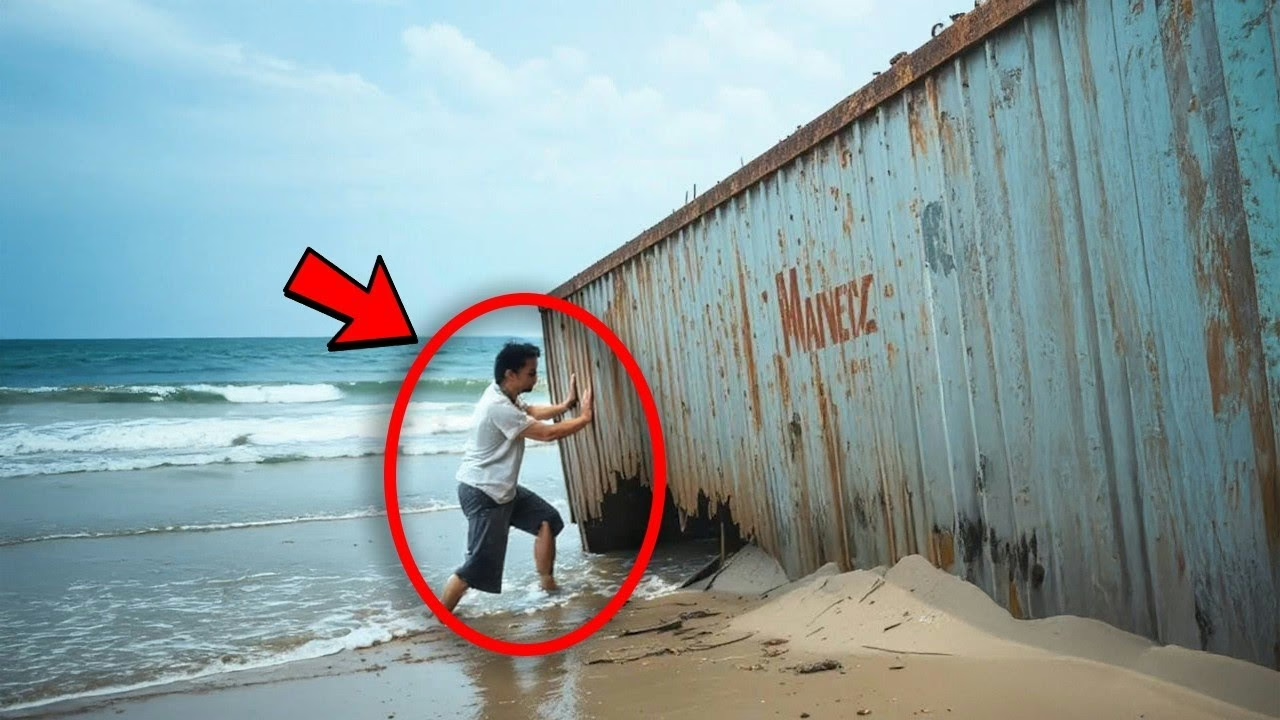It began as a simple home renovation — the kind of project that families take on with optimism and a shared dream.
But beneath the cracked glass and overgrown vines of an old Victorian greenhouse, the Harris family discovered something far more extraordinary — and far more unsettling — than they ever imagined.
Before we begin, make sure you’re subscribed if you haven’t already, and hit that notifications bell so you won’t miss any of our new, incredible stories.
The Forgotten Greenhouse
The Harris family — Tom, Clara, and their teenage son, Leo — had always wanted to live in the countryside.
After years in the city, they’d found the perfect place: an aging Victorian home surrounded by wild, untamed gardens. The paint was peeling, the floors creaked, and the roof sagged in places, but it had soul. And in the backyard, almost hidden by ivy and briar, stood its strangest feature — a long-forgotten greenhouse.
It was beautiful in a haunting way: rusted iron ribs and shattered glass panes, half-swallowed by nature. Inside, ferns had grown wild through cracked stone paths, and vines climbed the skeletal frames like fingers trying to reclaim what was once theirs.
For Clara, a former biology teacher, the greenhouse felt magical — a place where science and nature once met.
“This will be our first project,” she told Tom. “We’ll bring it back to life.”
They didn’t know then how prophetic those words would be.
The Woman Who Built It
Old property records revealed that the estate had once belonged to a woman named Allara Vance, who died in the 1920s. The locals remembered her only vaguely — the spinster botanist, the lady with the strange flowers, the one who never left her garden.
The town’s archives had little else to say. No photographs, no descendants, only a faded obituary that mentioned her “dedication to horticulture” and her “unusual solitude.”
For Clara, the mystery was intoxicating. She imagined Allara tending to her plants in silence while the rest of the world marched toward modernity — cars, electricity, war. The greenhouse, then, wasn’t just a structure; it was a tomb of forgotten ambition.
The Sound Beneath the Floor
Restoration began on a gray Saturday morning.
Tom handled the structure, tightening bolts and reinforcing beams, while Clara and Leo cleared the debris that had accumulated over decades — cracked flowerpots, shards of glass, long-dead roots tangled like veins through the floor.
They worked until the sun hung low, ready to call it a day, when Tom’s crowbar struck something solid — not stone, not dirt, but metal.
He knelt, brushed away the soil, and saw it: a large square outline embedded in the ground — a cast-iron hatch.
For a long moment, none of them spoke.
A hatch in a greenhouse? It didn’t make sense.
“Maybe it’s a well,” Tom suggested.
“Or a root cellar,” Clara offered.
But deep down, none of them believed that.
Their exhaustion melted into adrenaline. Together, they pried at the edges, forcing the rusted hinges to yield. With a shriek of metal, the hatch finally lifted — and a breath of cold, stale air escaped from below.
Tom shone his flashlight down.
The beam revealed a narrow staircase spiraling into perfect blackness.
The Descent
“Stay here,” Tom said.
But Clara followed, flashlight trembling slightly in her hand. Leo, despite their protests, refused to be left behind.
Each step groaned under their weight. The deeper they went, the colder it became. The air was dry — not the damp earth smell of a cellar, but sterile, as if preserved.
The stairs opened into a circular stone chamber, the craftsmanship impeccable.
“It’s an ice house,” Tom whispered, awe in his voice. Wealthy estates used to have these before electricity — underground chambers to store ice through summer.
But their lights caught something else — something that didn’t belong.
In the far wall was another door.
Smaller. Thicker. Steel.
It wasn’t locked.
When Tom pulled, it opened easily — too easily — the hinges silent and smooth, as if they had been oiled recently.
A faint chemical scent drifted out. Beyond it, they saw tables, glass, and… order.
The Laboratory
It wasn’t a cellar.
It wasn’t an ice house.
It was a laboratory.
Perfectly preserved.
Wooden benches lined the walls, each covered with 19th-century scientific equipment — brass microscopes, glass beakers, and intricate distillation coils that gleamed beneath the flashlight beam. Charts and sketches hung everywhere — but not of people, or even anatomy. They were drawings of plants — hundreds of them — detailed, labeled, and impossibly beautiful.
The room looked as though its occupant had just stepped out moments ago.
On one of the desks lay an open journal, its leather cover still supple despite its age. Beside it rested a fountain pen, its nib blackened with ink.
Clara picked it up with shaking hands.
On the first page, written in elegant script:
A. R. Vance — 1895.
The eccentric recluse. The forgotten gardener.
This was her secret world.
A Hidden Genius
They spent hours reading the journals, turning each fragile page with reverence. Slowly, the image of Allara Vance came into focus.
She wasn’t merely a hobbyist gardener — she was a scientist, a self-taught geneticist decades ahead of her time. Her notes described experiments in cross-pollination, controlled climate chambers, and plant hybridization that predated modern genetics by nearly half a century.
But there was a sadness between the lines.
She wrote of rejection, of men in academia dismissing her ideas, of lectures she was not allowed to give, of doors closed simply because of her gender.
And so, Allara had built her own door — a hidden sanctuary beneath her greenhouse, where she could pursue her research in secret.
Her words read like a manifesto:
“If they will not let me join their world of science, then I shall create my own — in the language of roots, petals, and chlorophyll.”
But there was one phrase, written again and again throughout the journals, that none of them could ignore:
“The Garden Beyond Extinction.”
The Seed Bank
On the central worktable sat a collection of small wooden boxes. Dozens of them. Each labeled with dates and botanical names written in neat script.
Leo lifted one lid carefully. Inside were tiny envelopes made of folded parchment. He opened one.
Seeds — black, dry, perfectly preserved.
Clara’s breath caught in her throat.
“It’s a seed bank,” she whispered. “A nineteenth-century seed bank.”
The realization struck like lightning.
Allara hadn’t just studied plants.
She had been saving them.
Species that may have died out long ago — preserved before they vanished forever.
Flowers lost to blight.
Fruits erased by industrial farming.
Vegetables whose taste no modern palate would ever know.
Each box was a time capsule, and Allara’s greenhouse — her supposed eccentric obsession — had been built directly above her vault of life.
The Revival
They contacted the National Botanical Gardens, who arrived within 24 hours. The moment the experts stepped into the underground lab, they fell silent. Every piece of equipment was examined, documented, and dated. Everything pointed to late 19th century — yet the preservation was flawless.
Allara’s journals were a revelation. Her notes detailed genetic principles long before Gregor Mendel’s work became widely accepted.
She was, without question, a lost pioneer.
The scientists carefully cataloged the seeds, cross-referencing them with modern databases.
That’s when the true magnitude of the discovery emerged.
At least a dozen species in Allara’s collection were officially extinct.
Some hadn’t been seen in over a hundred years.
The lab became known as The Vance Seed Vault — a place where extinction itself had been defied.
The First Bloom
Months later, under sterile conditions in a modern facility, the germination trials began.
Most seeds lay dormant, their viability uncertain after so many years. But the scientists persisted, following every method in Allara’s notes.
And then, one morning, under the soft hum of lab lights — it happened.
A single green shoot broke through the soil.
A lily — a species cataloged as extinct since 1911 — stretched its fragile leaves toward the light.
The Harris family was invited to witness it. Clara wept. Tom stood speechless, holding Leo’s shoulder as they watched the miracle unfold.
It was more than a plant.
It was proof that life could wait — patiently, silently — until the world was ready to welcome it back.
The Legacy of Allara Vance
News of the discovery spread across the world.
Newspapers called it “The Greenhouse Miracle.”
Botanists hailed Allara Vance as a visionary, a woman who had quietly changed the course of science from beneath her garden.
Her journals were published posthumously. Schools began teaching her work alongside Mendel and Darwin. A statue was erected in her honor at the National Botanical Gardens — her likeness cast in bronze, holding a single blooming flower in her hands.
But for the Harris family, her legacy was more personal.
They restored the greenhouse to its former glory — but they left the hatch untouched, preserved exactly as they had found it. A plaque beside it now reads:
“Here lies the lab of Allara Vance, whose hands saved what the world forgot.”
Each spring, new seedlings grown from her collection are planted there — delicate, impossible colors that once existed only in memory.
The Garden Beyond Extinction
Yet, not everything about the discovery was publicized.
In the final pages of Allara’s journal, there was an unfinished entry. The ink trailed off mid-sentence, but one paragraph remained:
“Some seeds are not meant for this world.
They wait for a different one.
A world that will understand them.”
No one knows what species she was referring to.
A handful of the seed envelopes bore strange, unfamiliar names — plants that appear in no record, ancient or modern.
Those particular samples were sealed away in the botanical archives, their testing postponed indefinitely.
Even now, some scientists whisper that Allara’s collection contained more than biology.
That she had crossed a boundary — reviving not just extinct species, but something older, something primordial.
But whether that’s true or not, one thing is certain:
The line between death and life is thinner than we think.
And sometimes, it’s buried beneath our feet, waiting patiently — like a seed in the dark — for someone to lift the hatch and let the light in.
Epilogue: The Bloom
Today, if you visit the Harris estate, you’ll see a breathtaking sight.
The once-ruined greenhouse now glows at dusk, filled with colors that no modern catalog can name. The air hums softly — a strange perfume of flowers that bloom out of season, petals that shimmer faintly under moonlight.
Clara tends to them every morning.
She swears that sometimes, when the wind rustles through the leaves, she hears a whisper — a woman’s voice, soft and distant, murmuring in Latin.
Tom laughs it off. Leo says it’s just the old glass creaking.
But Clara isn’t so sure.
She believes Allara never truly left her greenhouse.
That her spirit, like her seeds, simply waited for the right conditions to awaken again.
And in that fragile space between decay and rebirth, between science and faith, a long-forgotten garden has come alive once more —
The Garden Beyond Extinction.




